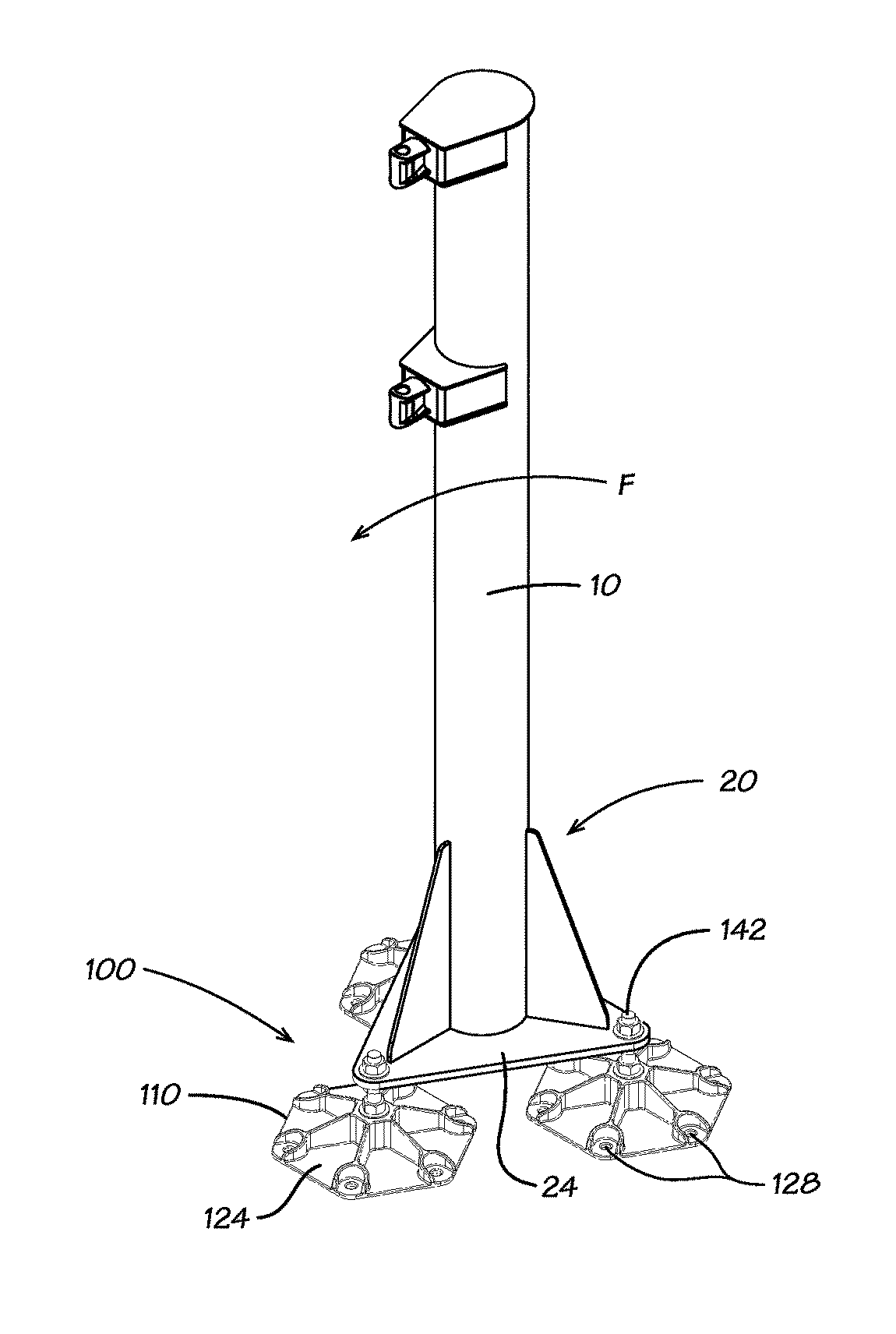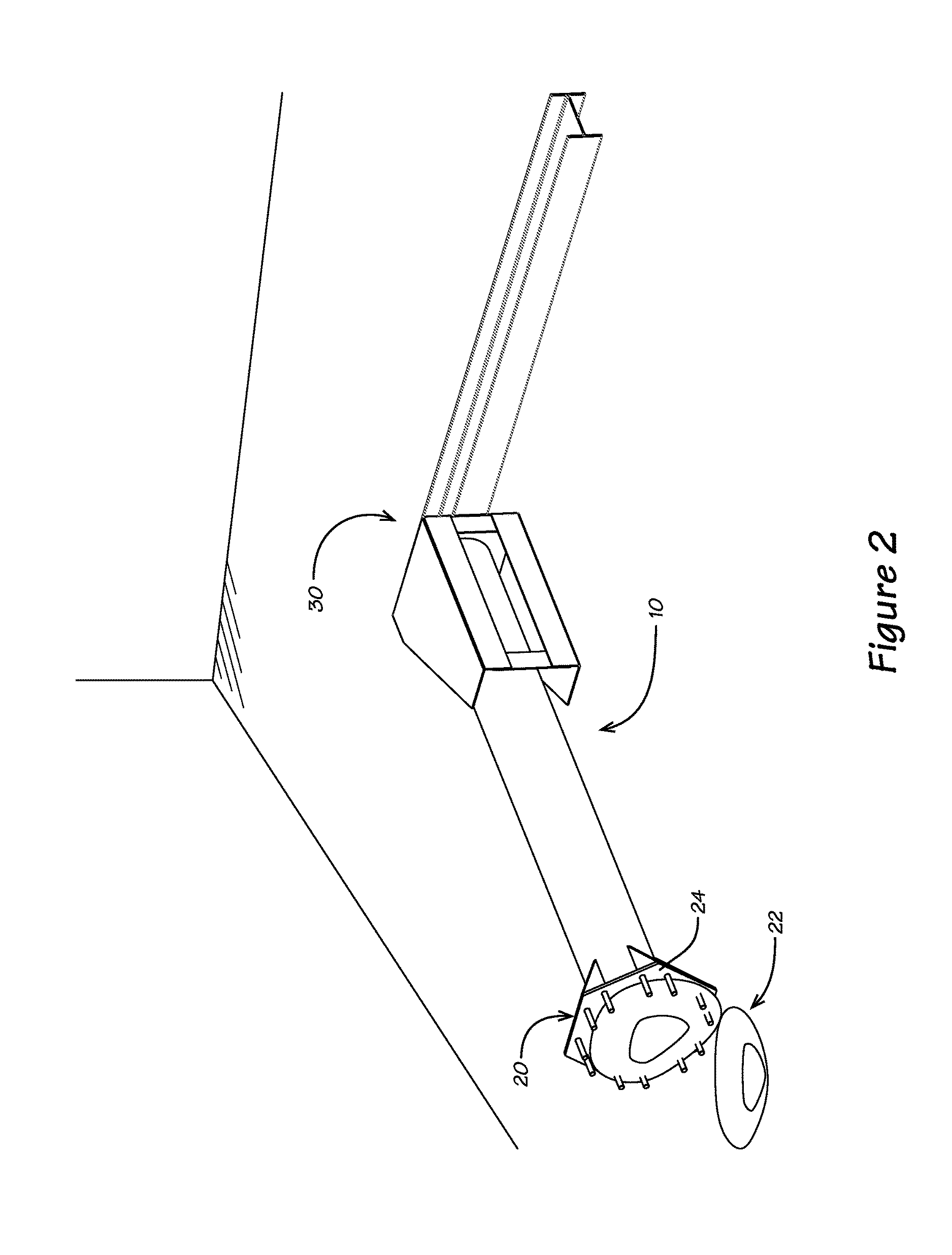Anchoring system
a technology of anchoring system and anchoring plate, which is applied in the direction of buildings, buildings, constructions, etc., can solve the problems of weakened holding strength of existing floors, damage to the integrity of foundations, and compromise of structural integrity of foundations, so as to improve the stability of anchoring plate, improve the dispersion and distribution, and improve the effect of anchoring strength
- Summary
- Abstract
- Description
- Claims
- Application Information
AI Technical Summary
Benefits of technology
Problems solved by technology
Method used
Image
Examples
Embodiment Construction
[0022]This description begins with reference to FIG. 2 and an explanation of the problem inherent therewith. The support systems used for poles or columns 10 in the prior art often include a mounting plate 24 extending perpendicular to the longitudinal axis of the pole or column 10. The mounting plate 24 provides peripheral openings 26 for receiving anchor bolts so that the pole 10 can be secured to the solid concrete foundation. If L-shaped bolts are not set in place when new concrete is poured, the alternative is to drill holes in an existing foundation 22 and attach the base thereto using concrete anchor bolts 120, such as concrete wedge-type anchor bolts known in the industry.
[0023]Moreover, holes are drilled in the concrete using a hammer drill and a carbide tip masonry drill bit, the same diameter as the anchor bolt 120. The concrete wedge anchor bolts 120 are then hammered into the drilled holes to ensure the desired depth after passing through mount openings 26 around the pe...
PUM
 Login to View More
Login to View More Abstract
Description
Claims
Application Information
 Login to View More
Login to View More - R&D
- Intellectual Property
- Life Sciences
- Materials
- Tech Scout
- Unparalleled Data Quality
- Higher Quality Content
- 60% Fewer Hallucinations
Browse by: Latest US Patents, China's latest patents, Technical Efficacy Thesaurus, Application Domain, Technology Topic, Popular Technical Reports.
© 2025 PatSnap. All rights reserved.Legal|Privacy policy|Modern Slavery Act Transparency Statement|Sitemap|About US| Contact US: help@patsnap.com



